Northern Great Plains Research Laboratory NEON (NOGP) Soil Descriptions
Distributed Soils Reports
Pedon Descriptions
Pit‐level observations and field measurements reported using the standard NRCS format. They contain volume estimates for coarse fragments > 20 mm where applicable.
Site Level Plot Summary
A narrative summary that places the sampled soil pedons in the broader context of soils and geomorphology for the entire NEON site.
Megapit Images
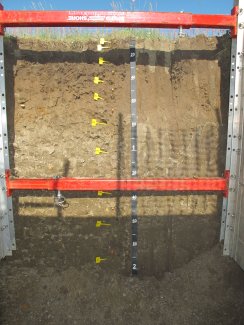
D09 NOGP megapit soil profile 0-200 cm
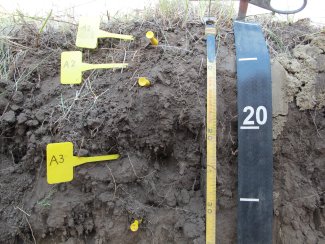
D09 NOGP megapit soil profile 0-35 cm
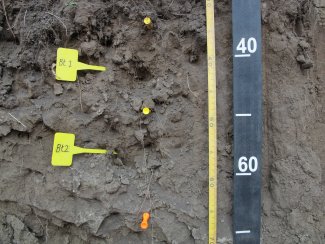
D09 NOGP megapit soil profile 30-70 cm
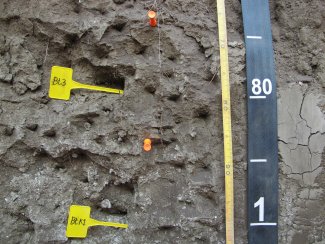
D09 NOGP megapit soil profile 63-101 cm
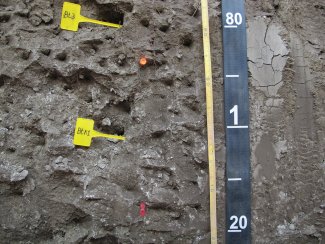
D09 NOGP megapit soil profile 74-120 cm
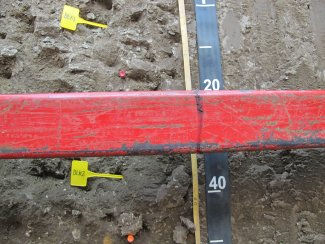
D09 NOGP megapit soil 98-148 cm
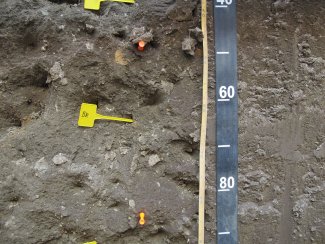
D09 NOGP megapit soil profile 138-190 cm
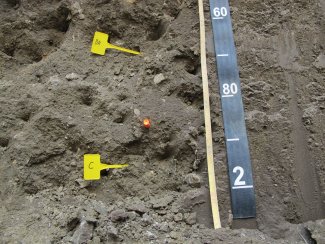
D09 NOGP megapit soil profile 155-200 cm
Megapit Pedon Description
| Print Date | Jul 22 2015 |
|---|---|
| Description Date | Jul 30 2013 |
| Describer | P. Sullivan, W. Bott |
| Site ID | S2013ND059-001 |
| Pedon ID | S2013ND059001 |
| Lab Source ID | SSL |
| Lab Pedon # | 13N96165 |
| Soil Name as Described/Sampled | Farnuf |
| Taxon Kind | series |
| Geomorphic Setting | on footslope of plains on footslope of alluvial flat |
| Upslope Shape | linear |
| Cross Slope Shape | linear |
| Particle Size Control Section | 31 to 84 cm. |
| Description origin | Pedon PC 5.1 |
| County | Morton |
| MLRA | 54 -- Rolling Soft Shale Plain |
| Soil Survey Area | 5-DIC -- Dickinson, North Dakota |
| Std Latitude | 46.7684600 |
| Std Longitude | -100.9183200 |
| Parent Material | alluvium |
| Description database | KSSL |
| Diagnostic Features | mollic epipedon 0 to 31 cm. argillic horizon 31 to 84 cm. calcic horizon 84 to 182 cm. |
| Slope (%) | 2.0 |
| Drainage Class | well |
| Horizon Details |
A1--0 to 4 centimeters (0.0 to 1.6 inches); very dark grayish brown (10YR 3/2) loam, very dark brown (10YR 2/2), moist; 18 percent clay; moderate fine granular structure; friable, slightly sticky, slightly plastic; many very fine roots throughout and common medium roots throughout and many fine roots throughout; noneffervescent, by HCl, 1 normal; clear wavy boundary. Lab sample # 13N08646 A2--4 to 11 centimeters (1.6 to 4.3 inches); very dark grayish brown (10YR 3/2) loam, very dark brown (10YR 2/2), moist; 18 percent clay; moderate medium subangular blocky structure; friable, slightly sticky, slightly plastic; many very fine roots throughout; noneffervescent, by HCl, 1 normal; clear wavy boundary. Lab sample # 13N08647 A3--11 to 31 centimeters (4.3 to 12.2 inches); very dark grayish brown (10YR 3/2) loam, very dark brown (10YR 2/2), moist; 18 percent clay; weak coarse subangular blocky parts to weak medium subangular blocky structure; friable, slightly sticky, slightly plastic; many very fine roots throughout and many fine roots throughout; noneffervescent, by HCl, 1 normal; clear wavy boundary. Lab sample # 13N08648 Bt1--31 to 46 centimeters (12.2 to 18.1 inches); brown (10YR 4/3) loam, dark grayish brown (10YR 4/2), moist; 25 percent clay; weak coarse prismatic parts to weak medium subangular blocky structure; friable, moderately sticky, slightly plastic; common very fine roots throughout and many fine roots throughout; 25 percent distinct 10YR 2/2) clay films on all faces of peds; noneffervescent, by HCl, 1 normal; gradual wavy boundary. Lab sample # 13N08649 Bt2--46 to 64 centimeters (18.1 to 25.2 inches); brown (10YR 4/3) loam, dark grayish brown (10YR 4/2), moist; 26 percent clay; moderate coarse prismatic parts to weak medium subangular blocky structure; friable, moderately sticky, slightly plastic; common very fine roots throughout and many fine roots throughout; 25 percent 10YR 3/3) clay films on all faces of peds; noneffervescent, by HCl, 1 normal; clear wavy boundary. Lab sample # 13N08650 Bt3--64 to 84 centimeters (25.2 to 33.1 inches); brown (10YR 4/3) clay loam, brown (10YR 4/3), moist; 29 percent clay; moderate coarse prismatic parts to moderate medium subangular blocky structure; firm, moderately sticky, slightly plastic; common fine roots throughout; 25 percent 10YR 3/3) clay films on all faces of peds; 1 percent 5 to 75-millimeter mixed rock fragments and 2 percent 2 to 5-millimeter mixed rock fragments; noneffervescent, by HCl, 1 normal; clear wavy boundary. Lab sample # 13N08651 Btk1--84 to 112 centimeters (33.1 to 44.1 inches); clay loam, dark grayish brown (10YR 4/2), moist; 29 percent clay; weak coarse prismatic parts to weak medium subangular blocky structure; friable, moderately sticky, slightly plastic; common very fine roots throughout; carbonate, finely disseminated and 20 percent medium prominent 10YR 8/2) carbonate masses in matrix; 1 percent 5 to 75-millimeter mixed rock fragments and 2 percent 2 to 5-millimeter mixed rock fragments; violent effervescence, by HCl, 1 normal; gradual wavy boundary. Lab sample # 13N08652 Btk2--112 to 145 centimeters (44.1 to 57.1 inches); clay loam, brown (10YR 4/3), moist; 28 percent clay; 1 percent fine distinct (7.5YR 4/6) mottles; weak coarse prismatic parts to weak coarse subangular blocky structure; friable, moderately sticky, slightly plastic; common very fine roots throughout; 15 percent distinct 10YR 3/3) clay films on all faces of peds; carbonate, finely disseminated in matrix and 15 percent coarse prominent 10YR 8/2) carbonate masses in matrix; 1 percent 5 to 75-millimeter mixed rock fragments and 2 percent 2 to 5-millimeter mixed rock fragments; violent effervescence, by HCl, 1 normal; gradual wavy boundary. Lab sample # 13N08653 Bk--145 to 182 centimeters (57.1 to 71.7 inches); loam, olive brown (2.5Y 4/3), moist; 26 percent clay; 5 percent coarse prominent (7.5YR 4/6) mottles; weak coarse subangular blocky parts to weak medium subangular blocky structure; friable, moderately sticky, slightly plastic; common very fine roots throughout; 10 percent coarse prominent 10YR 8/2) carbonate masses in matrix; 1 percent 5 to 75-millimeter mixed rock fragments and 2 percent 2 to 5-millimeter mixed rock fragments; strong effervescence, by HCl, 1 normal; gradual wavy boundary. Lab sample # 13N08654 C--182 to 200 centimeters (71.7 to 78.7 inches); loam, olive brown (2.5Y 4/3), moist; 24 percent clay; 2 percent medium prominent (7.5YR 4/6) mottles; massive; friable, moderately sticky, slightly plastic; common very fine roots throughout; 1 percent 5 to 75-millimeter mixed rock fragments and 2 percent 2 to 5-millimeter mixed rock fragments; strong effervescence, by HCl, 1 normal. Lab sample # 13N08655 |
Credits: This megapit soil pedon description was generously created by USDA Natural Resource Conservation Service staff, with particular thanks to Larry West, Jon Hempel, and numerous field staff.